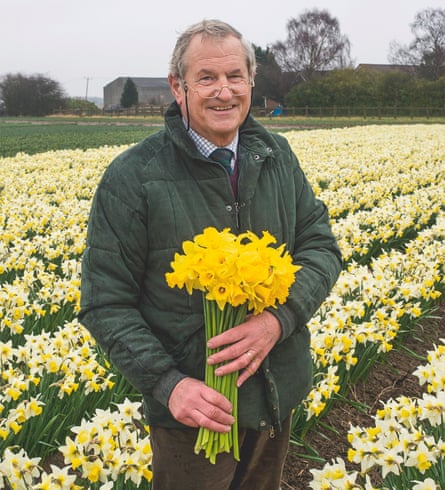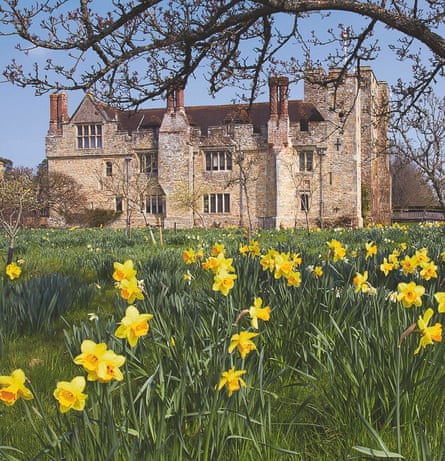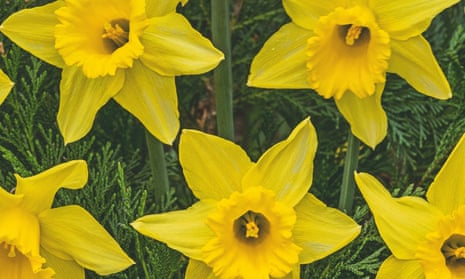The daffodil is such an optimistic flower. As it breaks through the late winter gloom, our thoughts turn to the warmer, longer days to come. No one knows more about them than Johnny Walkers, who has spent a lifetime championing this sunniest of bulbs.
The Guardian’s product and service reviews are independent and are in no way influenced by any advertiser or commercial initiative. We will earn a commission from the retailer if you buy something through an affiliate link. Learn more.
The true daffodil, Narcissus pseudonarcissus, was once common in our woodlands. Now it is so much scarcer in the wild, we have to grow its many and varied relatives in our gardens. They are the least fussy of plants and will grow in sunshine or shade. ‘February Gold’ is one of the earliest (although not always in February) and the season stretches to the ‘Pheasant Eye’ narcissus in late April and beyond.

Walkers’ Dutch parents were bulb-growers who came to England in the 1930s and, stranded by war, moved to the appropriately named South Holland district of Lincolnshire where they joined many other small-scale commercial nurseries who found the flat, fertile soil ideal for bulb-growing. Working in their nursery as a boy, says Walkers, meant “you were drip-fed knowledge you didn’t realise you were picking up”. After joining a local bulb co-operative as quality manager, he set up Walkers Bulbs in 1986. Many old varieties had been lost during the second world war, when daffodil growers were forced to plough up fields and grow food, but enough survived for Walkers to track them down and offer them alongside the new introductions. Two favourites are ‘Mary Copeland’, a white and red double bred in 1913, and ‘Thalia’, a multiheaded white, dating from 1916. He is known for his medal-winning displays at Chelsea Flower Show: he is currently cosseting the bulbs that – all being well – will earn him his 25th consecutive gold this May.

Walkers’ love of daffodils is down to the fact they are so long-lasting. “With the right choice of daffodils you can have colour for months.” He recommends dwarf and fragrant varieties in pots and tubs close to the house, with larger varieties in borders. Daffodils can also be naturalised in lawns. They must not have their leaves tied in knots, or be cut back after flowering. “Leave them to die down naturally, ideally for eight weeks,” he says. “After flowering, the plant can do its work and the energy return to the bulb.”
Next week at Hever Castle, Walkers will show visitors round Anne Boleyn’s orchard, which is carpeted with tens of thousands of daffodils, many planted 100 years ago by a previous owner, the American William Waldorf Astor. He was, apparently, as enthusiastic about them as Walkers. “Daffodils are idiot-proof – even if you leave bulbs in the shed and don’t get round to planting them, they will still bloom.”
Dazzling Daffodils, with Johnny Walkers, is at Hever Castle from 21-25 March 2018.
Top five garden daffodils for 2018

1 ‘Katie Heath’ soft pink cup on short stems
2 ‘Sealing Wax’ yellow petals and red cup
3 ‘Beauvallon’ yellow and red double with strong stems. Plant in the front of the border so it gets plenty of light
4 ‘Vernal Prince’ late variety white petals and yellow cup with a green eye
5 ‘Thalia’ if daffodils are idiot-proof this variety is bomb-proof. Seems to thrive in most conditions especially on rockeries and in dry gardens

Comments (…)
Sign in or create your Guardian account to join the discussion